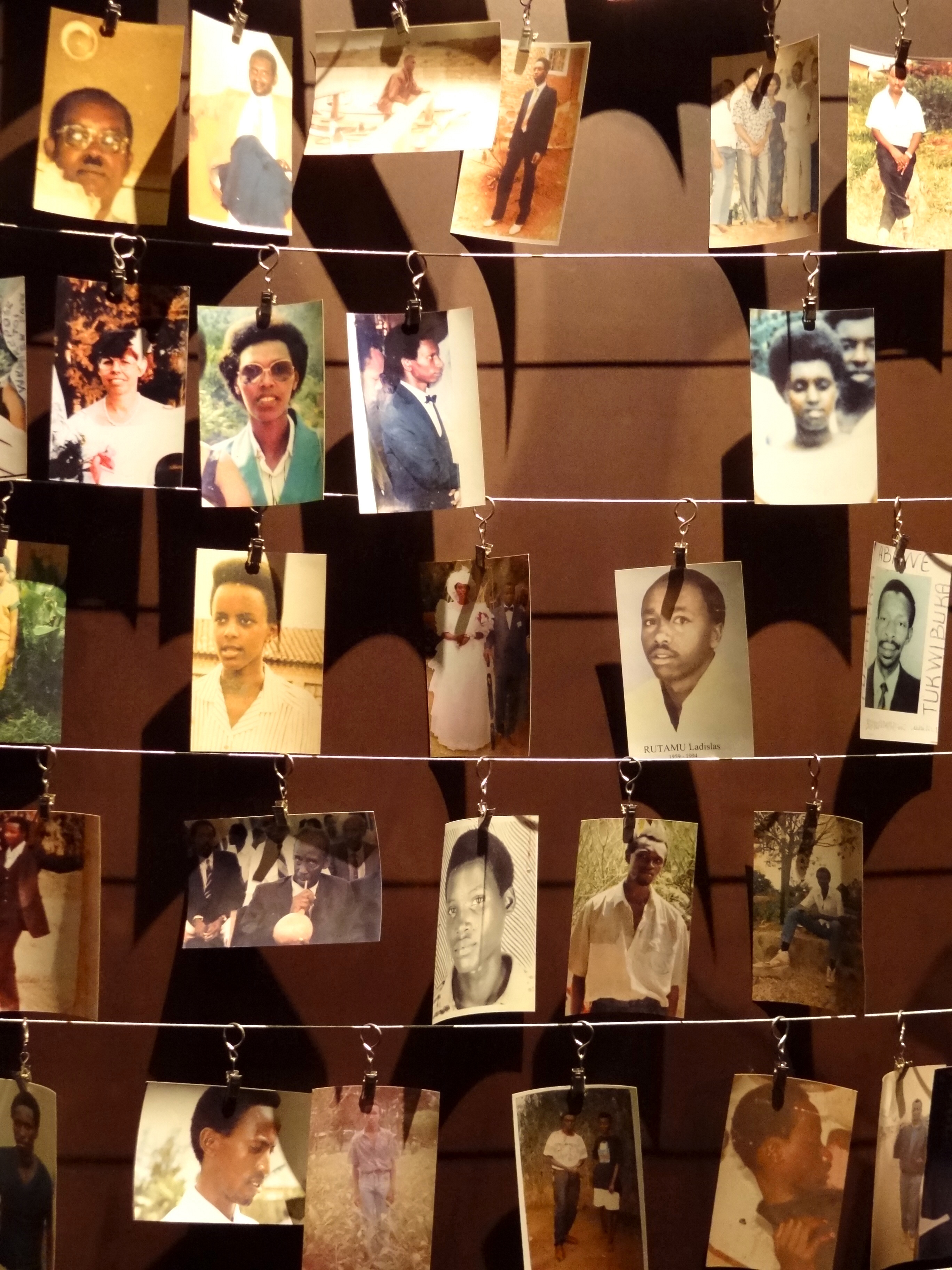|
Caraes Ndera Hospital
Ndera Neuropsychiatric Teaching Hospital, Known as Caraes Ndera Hospital, is a teaching hospital in Rwanda that provides specialized healthcare in psychiatry and neurology. Founded in 1968, the hospital is located in Ndera Sector, Gasabo District in City of Kigali. The hospital is owned by the Congregation of the Brothers of Charity in partnership with the Government Rwanda, with the Government supporting the hospital in human resource and administrative matters, and the congregation assuring the daily management of the hospital. Following its inauguration, Ndera Neuropsychiatric Teaching Hospital established two branches; CARAES Butare in Huye District, Southern Province in 1976 and Icyizere Psychotherapeutic Centre, in Kicukiro District, City of Kigali in 2003. The most prevalent pathology in psychiatry department at the hospital is schizophrenia, while the predominant pathology in neurology department is epilepsy Epilepsy is a group of non-communicable neurological dis ... [...More Info...] [...Related Items...] OR: [Wikipedia] [Google] [Baidu] |
Ministry Of Health (Rwanda)
The Ministry of Health (MOH, rw, Minisiteri y'Ubuzima, french: Ministère de la Santé) is a government ministry of Rwanda, headquartered in Kigali. As of 4 October 2016, Diane Gashumba is the minister, replacing Agnes Binagwaho, who served from 2011 to 2016. " Ministry of Health. Retrieved on 19 November 2016. References External links Ministry of Health Health
Health, according to the World Health Organization, is "a state of complete physical, mental and social well-being and not merely the absence of disease and infirmity".World Health Organization. (2 ...
[...More Info...] [...Related Items...] OR: [Wikipedia] [Google] [Baidu] |
Brothers Of Charity
The Brothers of Charity are an international religious institute of Religious Brothers and associate members at the service of the people most in need in the field of education and health care. The institute was founded in 1807 by Peter Joseph Triest in Ghent, Belgium. He also founded three other religious congregations inspired by Vincentian spirituality. The congregation's patron saint is St. Vincent de Paul. Today the Brothers maintain a presence in 30 countries. History The first work of the Brothers of Charity was caring for elderly men at Byloke. In 1809, Brother Jan Porter of the Byloke hospice, started to teach the alphabet to some street urchins at the gate. The first school was established in 1814. In 1815 the brothers began to tend to patients with mental illness that had been confined and restrained in the cellar of the Gerard-the-Devil castle. The name "Brothers of Charity" was given to the Brothers by the people of Ghent where they first served amongst the poor an ... [...More Info...] [...Related Items...] OR: [Wikipedia] [Google] [Baidu] |
Psychiatric Hospitals
Psychiatric hospitals, also known as mental health hospitals, behavioral health hospitals, are hospitals or wards specializing in the treatment of severe mental disorders, such as schizophrenia, bipolar disorder, eating disorders, dissociative identity disorder, major depressive disorder and many others. Psychiatric hospitals vary widely in their size and grading. Some hospitals may specialize only in short-term or outpatient therapy for low-risk patients. Others may specialize in the temporary or permanent containment of patients who need routine assistance, treatment, or a specialized and controlled environment due to a psychiatric disorder. Patients often choose voluntary commitment, but those whom psychiatrists believe to pose significant danger to themselves or others may be subject to involuntary commitment and involuntary treatment. Psychiatric hospitals may also be called psychiatric wards/units (or "psych" wards/units) when they are a subunit of a regular hospital. ... [...More Info...] [...Related Items...] OR: [Wikipedia] [Google] [Baidu] |
Hospitals In Rwanda
A hospital is a health care institution providing patient treatment with specialized health science and auxiliary healthcare staff and medical equipment. The best-known type of hospital is the general hospital, which typically has an emergency department to treat urgent health problems ranging from fire and accident victims to a sudden illness. A district hospital typically is the major health care facility in its region, with many beds for intensive care and additional beds for patients who need long-term care. Specialized hospitals include trauma centers, rehabilitation hospitals, children's hospitals, seniors' (geriatric) hospitals, and hospitals for dealing with specific medical needs such as psychiatric treatment (see psychiatric hospital) and certain disease categories. Specialized hospitals can help reduce health care costs compared to general hospitals. Hospitals are classified as general, specialty, or government depending on the sources of income received. A teaching ... [...More Info...] [...Related Items...] OR: [Wikipedia] [Google] [Baidu] |
Epilepsy
Epilepsy is a group of non-communicable neurological disorders characterized by recurrent epileptic seizures. Epileptic seizures can vary from brief and nearly undetectable periods to long periods of vigorous shaking due to abnormal electrical activity in the brain. These episodes can result in physical injuries, either directly such as broken bones or through causing accidents. In epilepsy, seizures tend to recur and may have no immediate underlying cause. Isolated seizures that are provoked by a specific cause such as poisoning are not deemed to represent epilepsy. People with epilepsy may be treated differently in various areas of the world and experience varying degrees of social stigma due to the alarming nature of their symptoms. The underlying mechanism of epileptic seizures is excessive and abnormal neuronal activity in the cortex of the brain which can be observed in the electroencephalogram (EEG) of an individual. The reason this occurs in most cases of epilepsy ... [...More Info...] [...Related Items...] OR: [Wikipedia] [Google] [Baidu] |
Schizophrenia
Schizophrenia is a mental disorder characterized by continuous or relapsing episodes of psychosis. Major symptoms include hallucinations (typically hearing voices), delusions, and disorganized thinking. Other symptoms include social withdrawal, decreased emotional expression, and apathy. Symptoms typically develop gradually, begin during young adulthood, and in many cases never become resolved. There is no objective diagnostic test; diagnosis is based on observed behavior, a history that includes the person's reported experiences, and reports of others familiar with the person. To be diagnosed with schizophrenia, symptoms and functional impairment need to be present for six months (DSM-5) or one month ( ICD-11). Many people with schizophrenia have other mental disorders, especially substance use disorders, depressive disorders, anxiety disorders, and obsessive–compulsive disorder. About 0.3% to 0.7% of people are diagnosed with schizophrenia during their lifet ... [...More Info...] [...Related Items...] OR: [Wikipedia] [Google] [Baidu] |
Pathology
Pathology is the study of the causes and effects of disease or injury. The word ''pathology'' also refers to the study of disease in general, incorporating a wide range of biology research fields and medical practices. However, when used in the context of modern medical treatment, the term is often used in a narrower fashion to refer to processes and tests that fall within the contemporary medical field of "general pathology", an area which includes a number of distinct but inter-related medical specialties that diagnose disease, mostly through analysis of tissue, cell, and body fluid samples. Idiomatically, "a pathology" may also refer to the predicted or actual progression of particular diseases (as in the statement "the many different forms of cancer have diverse pathologies", in which case a more proper choice of word would be " pathophysiologies"), and the affix ''pathy'' is sometimes used to indicate a state of disease in cases of both physical ailment (as in card ... [...More Info...] [...Related Items...] OR: [Wikipedia] [Google] [Baidu] |
Southern Province, Rwanda
Southern Province ( rw, Intara y'Amajyepfo; french: Province du Sud; nl, Zuidelijke Provincie) is one of Rwanda's five provinces. It was created in early January 2006 as part of a government decentralization program that re-organized the country's local government structures. Southern Province comprises the former provinces of Gikongoro, Gitarama, and Butare, and is divided into the districts of Huye, Ruhango, Nyamagabe, Gisagara, Muhanga, Kamonyi, Nyanza, and Nyaruguru Nyaruguru is a district (''akarere'') in Southern Province, Rwanda. Its capital is Kibeho, a pilgrimage site of the Catholic Church. Geography The district is the most southerly in Rwanda, lying between the cities of Butare and Cyangugu and .... The capital city of Southern Province is Nyanza. Notes and references External linksSouthern Province official website {{Coord, 2, 37, 19, S, 29, 36, 29, E, type:adm1st_region:RW_source:nlwiki, display=title Provinces of Rwanda States and ter ... [...More Info...] [...Related Items...] OR: [Wikipedia] [Google] [Baidu] |
Huye District
Huye is one of the eight districts (''Akarere'') that make up Rwanda's Southern Province. It has a total surface area of 581.5 square Kilometers. It has thirteen sectors and 77 cells with a total of 508 umudugudus (villages) in total. The district has a population of 328,298, with an average of 581 inhabitants per square kilometer. The largest city in the province is Butare. Geography and education Huye borders with Nyanza district in the North, Gisagara in the east and south, Nyaruguru in the south west and Nyamagabe in the north west. The hilly landscape protrudes from east to west but develops into a steep hilly and mountainous area as one moves towards the west and north west. The western part of the district has tall undulating mountains, including the famous Huye mountain. The district has rainfall a distribution pattern of 1.200 mm and an average climate of 19 °C. Huye was previously home to the National University of Rwanda, the oldest university in the countr ... [...More Info...] [...Related Items...] OR: [Wikipedia] [Google] [Baidu] |
Gasabo District
Gasabo is a district, (''akarere'') in Kigali city, the capital of Rwanda. The headquarter of Gasabo is located in Remera Sector. The district also includes large areas of the city itself, including Kacyiru, Kimironko, Remera, Nyarutarama and Kimihurura. The district is the location of the Gisozi Genocide Memorial Site, the burial place of approximately 300,000 victims of the 1994 Genocide against Tutsis . In addition to the cemetery, the memorial has a related genocide exhibition area and library and has plans to develop a teaching centre on the history of the genocide. History The original country of Rwanda, referred to as “the Rwanda of Gasabo” (u Rwanda rwa Gasabo), was a small territorial entity located in the present district of Gasabo, along the valley of Lake Muhazi, namely Nyabugogo. When the period of historical kings unfolded (“abami b’ibitekerezo”), Rwanda came under the reign of King Ruganzu Bwimba- The first king among series of historical kings who ... [...More Info...] [...Related Items...] OR: [Wikipedia] [Google] [Baidu] |
Kigali
Kigali () is the capital and largest city of Rwanda. It is near the nation's geographic centre in a region of rolling hills, with a series of valleys and ridges joined by steep slopes. As a primate city, Kigali has been Rwanda's economic, cultural, and transport hub since it became the capital following independence from Belgian rule in 1962. In an area controlled by the Kingdom of Rwanda from the 17th century and then by the German Empire, the city was founded in 1907 when Richard Kandt, the colonial resident, chose the site for his headquarters, citing its central location, views and security. Foreign merchants began to trade in the city during the German era, and Kandt opened some government-run schools for Tutsi Rwandan students. Belgium took control of Rwanda and Burundi during World War I, forming the mandate of Ruanda-Urundi. Kigali remained the seat of colonial administration for Rwanda but Ruanda-Urundi's capital was at Usumbura (now Bujumbura) in Burundi and Kig ... [...More Info...] [...Related Items...] OR: [Wikipedia] [Google] [Baidu] |
Ndera
Ndera is one of the 15 sectors that make up the district of Gasabo found in kigali city. It is about from the capital. The sector is popular due to the location of Ndera Neuropsychiatric Teaching Hospital (Caraes Ndera) which is the referral hospital for neuropsychiatric disorders,. which was established in 1968 but received its first patients in 1972 The hospital re-opened in August 1994, and began treating people who had been traumatized by the recent Rwandan genocide The Rwandan genocide occurred between 7 April and 15 July 1994 during the Rwandan Civil War. During this period of around 100 days, members of the Tutsi minority ethnic group, as well as some moderate Hutu and Twa, were killed by armed Hutu .... As of 2008, it treated about 2,500 patients monthly. Ndera sector is also a home to the minor seminary of St. Vincent. References Citations Sources * * * * Kigali Province {{Rwanda-geo-stub ... [...More Info...] [...Related Items...] OR: [Wikipedia] [Google] [Baidu] |




.jpg)


